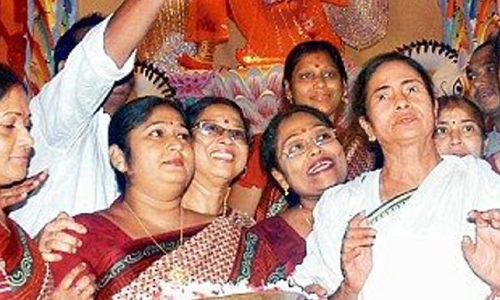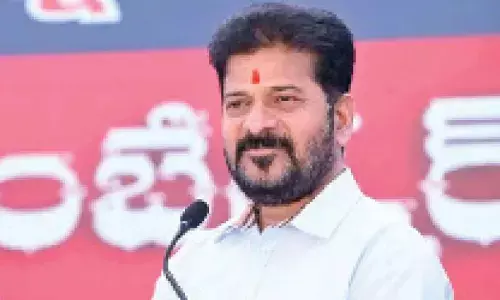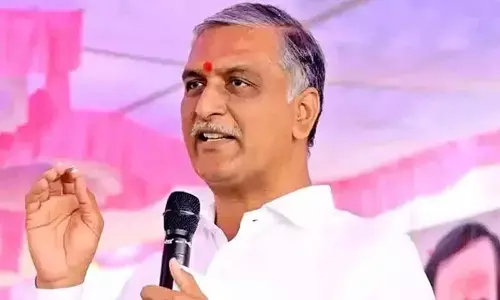Whither fighting BJP in its idiom

Mamata Banerjee\'s new-found interest in Rama Navami celebrations, and Congress president\'s unending visits to temples indicate opposition’s desperation to take on Narendra Modi in 2019 by countering BJP\'s politics of Hindutva, with either competitive Hindutva in the case of TMC or soft Hindutva by the Congress.
Mamata Banerjee's new-found interest in Rama Navami celebrations, and Congress president's unending visits to temples indicate opposition’s desperation to take on Narendra Modi in 2019 by countering BJP's politics of Hindutva, with either competitive Hindutva in the case of TMC or soft Hindutva by the Congress.
But, India's electoral experience both in the past and in the recent times reveals that regional parties and fervent regional political narratives prove to be an effective antidote to the Hindu nationalist narrative of saffron party. The election results in Telangana, West Bengal etc., in 2014 when Modi wave was sweeping the nation and recent by-poll in UP substantiate this analysis.
Failing to understand this, the opposition in its sheer political despair would like to fight BJP on the latter's home ground and a pitch favourable to saffron politics. All along, the BJP has been pursuing politics of majoritarianism. Capitalising on the politics of minority appeasement by non-BJP parties, the saffron party called its adversaries pseudo-secular. Given the opposition’s politics of compromise and the failure to convince the majority community on the virtues of secularism, the BJP narrative could cut ice with the large sections of Hindu electorate, though a majority of Hindus still believe in opposing religious politics.
Secularism means appeasement to none. But, secular parties have been at fault for treating minorities as vote-banks. Until the aggressive politics of majoritarianism came to the national mainstream, such vote-bank politics did pay political dividends. But, the BJP could exactly pitch itself in such a political milieu.
Perturbed by the surge of BJP that too in a political, and cultural terrain alien to it, the anti-BJP forces are groping in the dark to find a counter strategy. These parties have started feeling that unless they too appeal to religious sentiment, they cannot counter the BJP. Thus, Mamata Banerjee who until last year opposed any kind of mobilisation on the eve of Rama Navami in a state known for Durga Puja has now decided to organise counter celebrations to thwart BJP-RSS efforts to rally people on religious grounds.
Similarly, the Congress president calling himself an avowed Shiv Bakth continues his pilgrimage even while on political voyage. As the BJP paints secular politics as anti-Hindu and pro-minority politics, the Congress and the other secular parties are finding it essential to shed that image thrust upon them and project themselves as pro-Hindu too.
Of course, Congress compromise with politico religiosity is nothing new. The party under Rajeev Gandhi government unlocked the Ayodhya disputed structure to gain Hindu votes, and surrendered to Muslim fundamentalists after the Supreme Court historic verdict on Shah Bano case.
The BJP has been harping on the Italian origins of UPA chairperson Sonia Gandhi as part of its nationalist political narrative. The Congress seems to be perturbed by the aggressive brand of Hindu nationalism pursued by the BJP. The strategic managers of Congress party thus find a solace in soft Hindutva as a counter to BJP's propagandist politics.
As similar strategy was adopted by the BJP in West Bengal to counter TMC. In the wake of the Left decline in the state, the BJP tried to fill the void in the anti-TMC political camp. The TMC has in fact used the minority card to bolster its image in a state that has significant Muslim population. As the BJP surges ahead in the state and with the Left declining, the TMC attempted further consolidation of minority vote-bank.
The saffron party intelligently capitalised on Mamata Banerjee's politics of appeasement in a bid to catalyse Hindu consolidation. Despite her early attempt to resist, the TMC chief has started treading the path of BJP to counter the saffron surge. In fact, the BJP and the TMC helped each other's consolidation by resorting to competitive politico-religious mobilisation and politics of appeasement.
The Congress enthused by the results in Gujarat, a state known for religiosity, seems to be relying on the same formula with Rahul Gandhi making repeated visits to Hindu shrines even as the Congress Chief Minister in Karnataka conceded the demand of a section of Lingayats to detach from Hinduism. This is quite similar to the Rajeev Gandhi-led Congress pandering to both the Hindu and Muslim fundamentalism.
But, both the Congress and TMC should realise the vulnerabilities in fighting BJP in its own idiom. The non-BJP parties cannot go beyond a point to appeal to the religious sentiments whereas if not the BJP, its saffron parivar can do so.
In fact, the Gujarat Assembly elections and even the recent by-polls in Uttar Pradesh reveal that the caste is more than the religion is the most powerful election weapon in India. In the wake of the OBC and the dalit surge in the wake of SP and BSP alliance, the BJP attempted a pan-Hindu mobilisation and succeeded in it when the caste divide was exploited. But, the SP and the BSP came together when their survival was under threat due to BJP coming to power.
This resulted in the consolidation of OBC, Muslim and dalit vote coupled with the anti-incumbency suffered by BJP, leading to the ignominious defeat of the saffron brigade in the seats that were prestigious for it. Similarly, the Patel, OBC and dalit consolidations attempted by the Congress yielded partial results as the BJP executed counter mobilisation in the form of consolidation of OBCs opposed to Patels.
All this only reveals that rather than competitive Hindutva and soft Hindutva, the social engineering proved to be the most effective counter to pan-Hindu politico-religious mobilisation mastered by the BJP. Besides, the regional satraps are also able to resist the Modi juggernaut. In 2014, even when the nation was witnessing Modi wave, Telangana had not seen any significant impact of it.
Thanks to the sub-national sentiment created by the Telangana movement, the pan-Hindu card did not work in the state. Now, Chandrababu Naidu is trying to rouse Telugu pride to counter the nationalist political narrative of Team Modi. The regional satraps in West Bengal, Odisha, Uttar Pradesh, Tamil Nadu etc., were also able to do the same.
Even in the Congress-ruled states like Punjab, and now in Karnataka, the regional leaders are able to firmly counter the larger than life image of Modi.
The successes of BJP in the North East can be attributed more to the political machinations of BJP rather than the mandate for Hindutva. The anti-incumbency suffered by the BJP governments in Rajasthan, Madhya Pradesh, Chhattisgarh further indicate that politico-religious mobilisation cannot always work. It is true that the communal polarisation helped BJP to gain power in Uttar Pradesh. But, the underlying factors include anti-incumbency against the Akhilesh government and the infighting in the ruling SP.
Thus, the non-BJP parties should realise that they cannot beat BJP by following the same political idiom. Instead, they should attempt for home-grown models.














